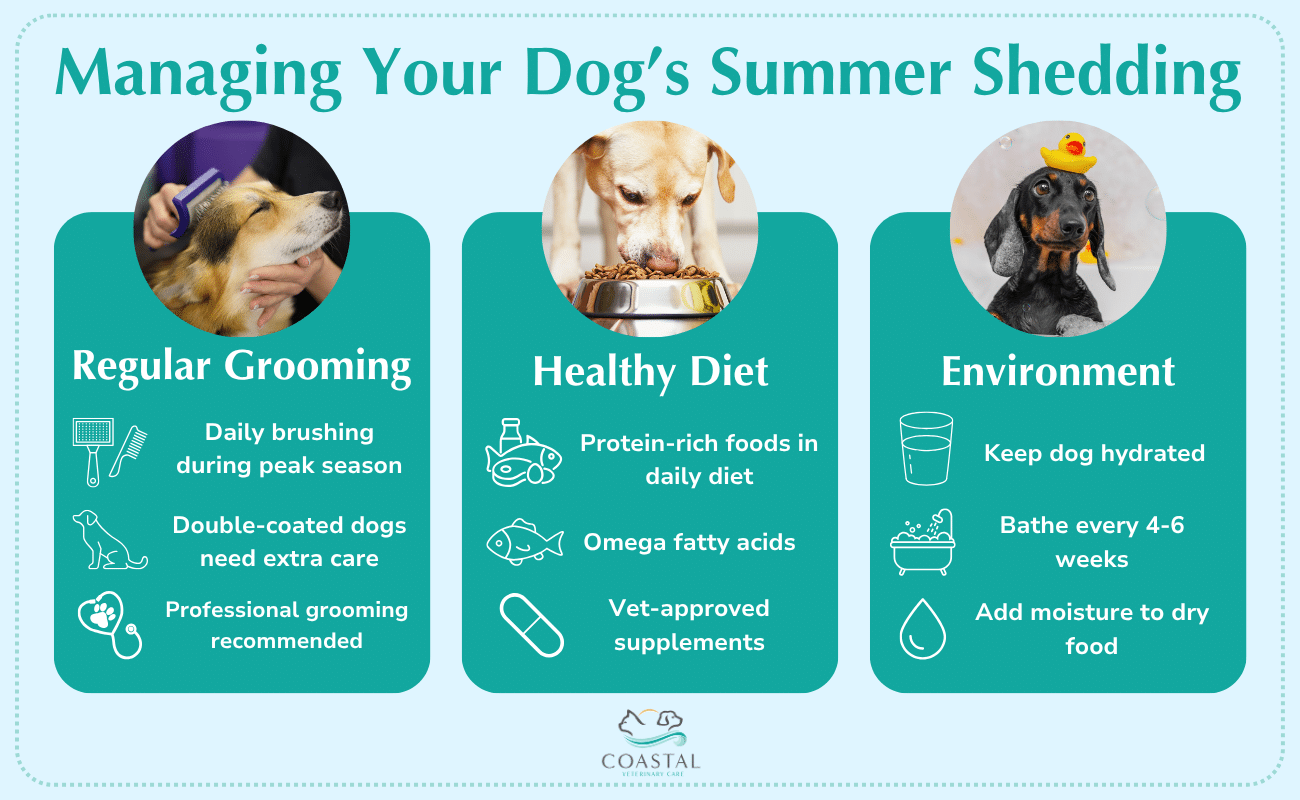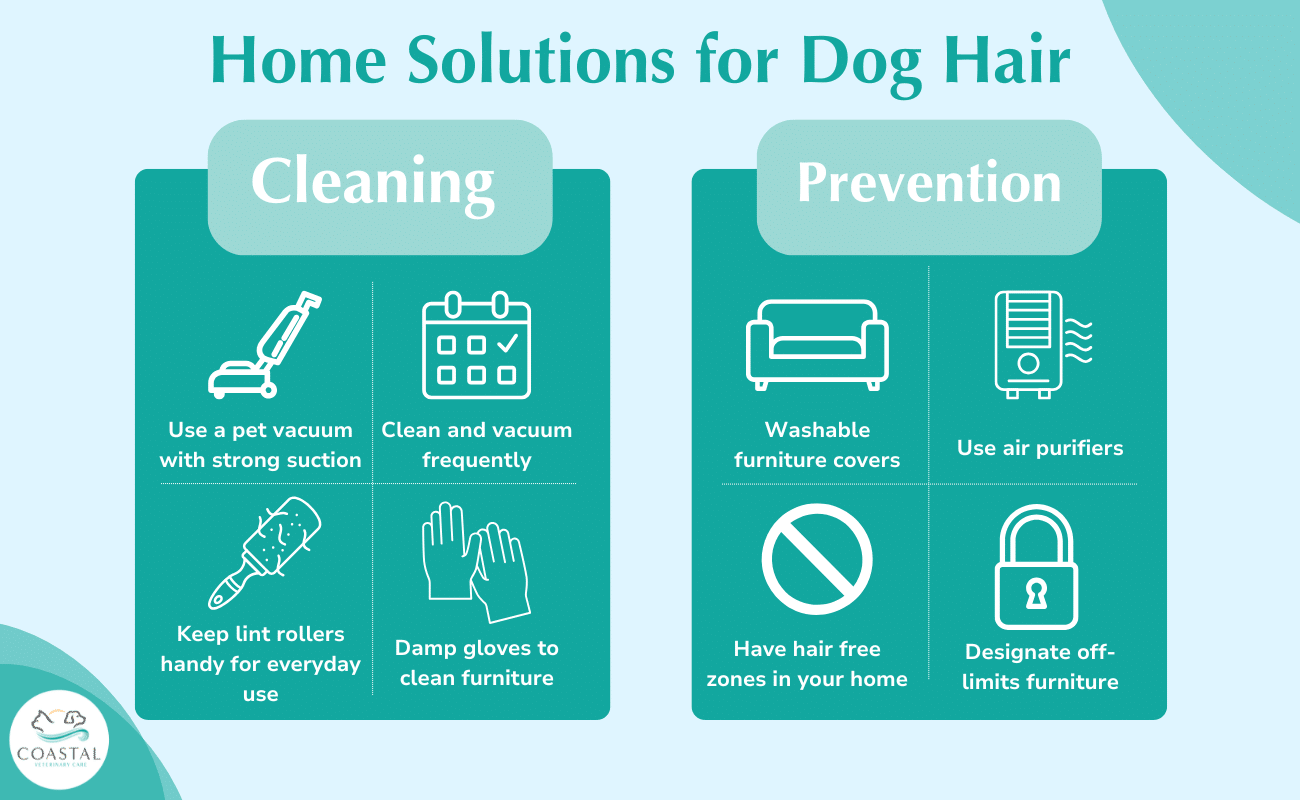Do Dogs Shed More in Summer? What Every Pet Parent Should Know
If you’ve noticed your lint roller working overtime during the warmer months, you’re not alone. Many dog owners find themselves asking the same question: Do dogs shed more in summer? The short answer is yes – most dogs do experience increased shedding during summer, and it’s a completely normal process that’s been happening for thousands of years.
Understanding why your dog’s shedding increases during summer can help you better manage the extra dog hair around your home and ensure your furry friend stays comfortable throughout the season. Let’s explore the reason behind seasonal shedding and what you can do to help your pet through this natural transition.
Understanding Why Summer Shedding Happens
Your dog’s coat works like a built-in heating and cooling system. During winter, dogs grow a thicker winter coat to stay warm in cold weather. When warmer months arrive, this heavy coat becomes too much and makes it harder for your dog to stay cool.
The shedding process happens when your dog’s body notices changes in the environment:
- Longer daylight hours signal seasonal changes
- Warmer temperatures trigger the coat switch
- Your dog’s body starts getting rid of thick winter hair
- New, lighter summer hair begins to grow
Think of it like changing from a heavy winter jacket to a light t-shirt when the weather gets warm. Your dog’s hair grows and sheds in cycles throughout the year. During shedding season, many hairs are ready to fall out at the same time, which is why you see so much more loose hair around your house.
Breed-Specific Summer Shedding Patterns
Not all dogs experience summer shedding in the same way. Your dog’s breed plays a significant role in determining how much seasonal shedding you can expect.
Double-Coated Breeds
Double-coated dogs experience the most dramatic seasonal shedding. These breeds have two distinct layers: a soft, dense undercoat that provides insulation, and a longer outer coat that repels water and debris. Popular double-coated breeds include the Golden Retriever, German Shepherd, Siberian Husky, and Australian Shepherd.
A double-coated breed will “blow” its coat twice a year – once in spring as it sheds its winter coat, and again in fall as it prepares for colder weather. During these periods, a double-coated dog can shed enormous amounts of hair, sometimes appearing to shed enough fur to create an entirely new dog.
Single-Coated Dogs
Single-coated dogs, such as Poodles, Maltese, and most terrier breeds, have only one layer of hair. While these dogs still experience some seasonal shedding, it’s typically much less dramatic than what double-coated dog owners experience. Many single-coated dogs shed consistently throughout the year rather than having distinct seasonal shedding periods.
Individual Variations
Even within the same dog breed, individual dogs may vary in their shedding patterns. Factors like age, overall health, and living environment can all influence how much your specific dog sheds during the summer months.
Managing Your Dog’s Summer Shedding
While you can’t prevent normal shedding, you can take steps to manage it well and keep both your dog and your home comfortable during peak shedding season.

Regular Grooming is Essential
Regular brushing is the most effective way to manage summer shedding. For most dogs, daily brushing during peak shedding periods helps remove loose hair before it ends up on your furniture and clothing. Use a bristle brush or a specialized deshedding tool appropriate for your dog’s coat type.
For double-coated dogs, regular grooming becomes even more critical. These dogs benefit from brushing sessions that reach both the outer coat and the dense undercoat. Neglecting regular brushing can lead to matting and make the shedding process more uncomfortable for your pet.
Professional grooming during shedding season can also be helpful. Groomers have specialized tools and techniques to safely remove large amounts of loose hair and can help prevent the undercoat from becoming impacted.
Supporting Healthy Skin and Coat
A healthy diet also plays a role in maintaining your dog’s skin and coat health. Dogs with nutritional deficiencies may experience excessive shedding or poor coat quality. Here’s what helps support a healthy coat:
-
- Protein-rich foods: Hair is mostly made of protein, so your dog needs enough protein in their diet.
- Fatty acids: Look for foods with omega-3 and omega-6 fatty acids that support healthy skin
- Quality dog food: Many high-quality foods already contain these nutrients
- Supplements: Your vet may recommend additional fatty acid supplements if needed
These nutrients help reduce skin irritation and support the normal shedding process. Omega-3 and omega-6 fatty acids are particularly beneficial for coat health and can help your dog maintain a shiny, healthy coat.
Environmental Considerations
Keep your dog well-hydrated during warmer months, as proper hydration supports healthy skin function. Provide plenty of fresh water and consider adding moisture to their diet if they primarily eat dry kibble.
Avoid over-bathing during shedding season, as this can increase shedding and cause skin irritation. Unless your dog gets dirty or develops an odor, bathing every 4-6 weeks is typically sufficient for most dogs.
When Summer Shedding Becomes a Concern
While seasonal shedding is normal, excessive shedding or certain patterns of hair loss may indicate underlying health issues that require veterinary attention.
Warning Signs to Watch For
Normal shedding should be relatively even across your dog’s body. Watch for these warning signs that may indicate a problem:
-
- Bald patches or concentrated hair loss in specific areas
- Shedding seems much worse than in previous years
- Shedding that continues long past the normal shedding season
- Skin irritation or persistent scratching
- Changes in your dog’s skin color or texture
- Digestive issues, along with unusual shedding patterns
Food allergies can also cause unusual shedding patterns, often accompanied by digestive issues or skin problems.
Health Conditions That Affect Shedding
Several health conditions can cause abnormal shedding patterns. Hormonal imbalances, thyroid problems, and various skin conditions can all lead to excessive shedding or changes in coat quality. Stress can also impact your dog’s shedding patterns, as can certain medications.
If your dog’s shedding is accompanied by other symptoms like lethargy, changes in appetite, or unusual behavior, it’s important to consult with your veterinarian. These could be signs that the hair loss is related to a medical condition rather than normal seasonal shedding.
Age-Related Changes
Senior dogs may experience changes in their shedding patterns as they age. Older dogs might shed more consistently throughout the year rather than having distinct seasonal periods, or their coat quality may change, becoming thinner or more brittle.
Home Management During Shedding Season
Even with proper grooming, you’ll still need strategies for managing dog hair in your home during peak shedding periods.

Cleaning Strategies
-
- Vacuum frequently, especially where your dog spends the most time
- Consider a pet-specific vacuum with stronger suction and special attachments
- Keep lint rollers handy in your home and car for quick clothing touch-ups
- Use slightly damp rubber gloves to gather hair from furniture
Preventive Measures
-
- Use washable furniture covers that are easy to remove and wash
- Try air purifiers to reduce airborne pet dander and hair
- Create hair-free zones like your bedroom during heavy shedding periods
- Keep certain furniture off-limits to give yourself a break from cleanup
The Bottom Line: Summer Shedding is Normal
Summer shedding is a natural and healthy process that shows your dog’s body is functioning as it should. While the extra dog hair can be challenging to manage, understanding that this seasonal change is normal can help reduce frustration and ensure you’re providing the best care for your pet.
Every dog is different, so pay attention to your dog’s patterns and consult with your veterinarian if you notice sudden changes or if excessive shedding comes with other concerning symptoms. With proper grooming, good nutrition, and a little extra housework, you and your dog can navigate shedding season successfully and keep your dog comfortable and healthy in their lighter summer coat.
If you have concerns about your dog’s shedding patterns or need guidance on managing seasonal changes, our team at Coastal Veterinary Care is here to help. We can provide personalized advice based on your dog’s specific breed, age, and health status to ensure they stay comfortable throughout the changing seasons.
Choose Coastal Veterinary Care in Myrtle Beach, SC
At Coastal Veterinary Care, we can help you determine an appropriate veterinary schedule that best supports your pet’s needs. From planning regular routine visits to understanding what to look for to identify when your pet may need to be seen to evaluate a specific injury or illness, we are here to help you make sure your pet gets the best possible care. Contact us today to learn more about why we are a trusted choice among pet owners in the Myrtle Beach, SC, area or to schedule an appointment!
